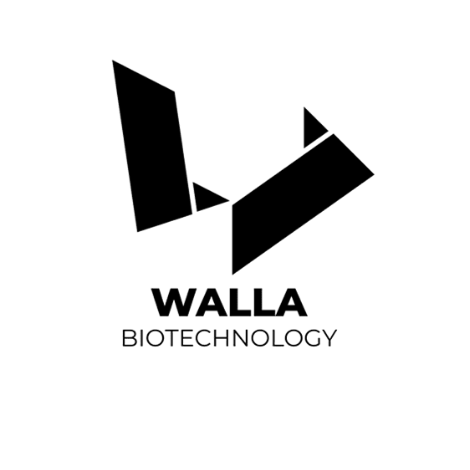MoSi2 vs. Alternative Heating Technologies: Why Dental Labs Choose Molybdenum Disilicide
MoSi2 vs. Alternative Heating Technologies: Why Dental Labs Choose Molybdenum Disilicide
In the competitive world of dental laboratory operations, choosing the right heating technology can significantly impact both operational efficiency and final restoration quality. While several heating element technologies exist, MoSi2 (Molybdenum Disilicide) has emerged as the preferred choice for dental sintering applications. Let's examine why.
The Heating Element Landscape for High-Temperature Applications
Available Technologies:
- MoSi2 (Molybdenum Disilicide)
- SiC (Silicon Carbide)
- Metallic elements (Kanthal, Nichrome)
- Graphite heating elements
- Tungsten-based elements
Each technology has distinct characteristics that affect performance, longevity, and suitability for dental zirconia sintering requirements.
Detailed Technology Comparison
Temperature Capabilities
MoSi2 Elements:
- Maximum operating temperature: 1850°C (3362°F)
- Optimal performance range: 1200-1800°C
- Excellent stability at zirconia sintering temperatures (1450-1600°C)
Silicon Carbide (SiC):
- Maximum operating temperature: 1600°C (2912°F)
- Limited headroom above typical sintering requirements
- Performance degradation near maximum temperatures
Metallic Elements (Kanthal/Nichrome):
- Maximum operating temperature: 1400°C (2552°F)
- Insufficient for high-temperature zirconia sintering
- Rapid oxidation above 1300°C
Graphite Elements:
- Very high temperature capability (>2000°C)
- Requires protective atmosphere (cannot operate in air)
- Contamination risk for dental ceramics
Longevity and Reliability
MoSi2 Performance:
- Typical lifespan: 2,000-5,000 operating hours
- Self-healing oxidation layer extends life
- Gradual degradation allows predictable replacement scheduling
SiC Performance:
- Shorter lifespan in oxidizing atmospheres
- Susceptible to thermal shock cracking
- Unpredictable failure patterns
Metallic Element Performance:
- Very limited life at high temperatures
- Rapid oxidation and scaling
- Frequent replacement requirements
Economic Analysis: Total Cost of Ownership
Initial Investment Comparison:
| Element Type | Relative Cost | Expected Lifespan | Cost per Hour |
|---|---|---|---|
| MoSi2 | 100% | 3,500 hours | Baseline |
| SiC | 70% | 1,200 hours | 2.0x Higher |
| Kanthal | 30% | 300 hours | 3.5x Higher |
Hidden Costs Consideration:
MoSi2 Advantages:
- Minimal unscheduled downtime
- Consistent heating performance reduces rework
- Lower maintenance labor requirements
- Bulk replacement scheduling advantages
Alternative Element Disadvantages:
- Frequent replacement disrupts production schedules
- Performance degradation affects product quality
- Higher maintenance labor costs
- Emergency replacement premium pricing
Performance Characteristics Critical to Dental Applications
Temperature Uniformity
MoSi2 elements provide superior temperature uniformity due to their thermal properties and element design. This uniformity is crucial for:
- Consistent zirconia grain structure
- Uniform shrinkage across restoration batches
- Predictable mechanical properties
- Reduced variation in final restoration dimensions
Contamination Resistance
Dental ceramics require exceptional purity. MoSi2 elements offer:
- Inert surface that doesn't contaminate sintering atmosphere
- No metallic ion migration into ceramic materials
- Stable chemical composition throughout operating life
- Clean burnout characteristics without residue
Rapid Heating Capability
Modern dental laboratories demand efficiency:
- MoSi2 elements can achieve rapid temperature rises
- Excellent thermal conductivity for fast heat transfer
- Maintains efficiency throughout element lifetime
- Enables shorter cycle times without compromising quality
Application-Specific Advantages
Zirconia Sintering Requirements:
Zirconia dental restorations require:
- Precise temperature control (±5°C)
- Clean, non-contaminating atmosphere
- Uniform heating across large batches
- Reliable, repeatable cycles
MoSi2 elements excel in all these requirements, while alternatives typically compromise one or more critical factors.
Multi-Material Compatibility:
Many dental labs process various ceramics:
- Zirconia (1450-1600°C)
- Lithium disilicate (920°C)
- Alumina-based ceramics (1050-1200°C)
- Porcelain (900-1000°C)
MoSi2's wide operating range accommodates all these materials with a single element technology, simplifying inventory and maintenance.
Why Leading Furnace Manufacturers Choose MoSi2
Zirkonzahn Engineering Decision: Zirkonzahn selected MoSi2 for their Zirkonofen series because of the element's ability to maintain precise temperature control and long service life in production environments.
Vita's Technical Rationale: Vita's Zyrcomat systems use MoSi2 elements specifically for their clean heating characteristics and compatibility with various ceramic materials.
Nabertherm's Quality Focus: Nabertherm chose MoSi2 for their LHT series to ensure consistent, high-quality sintering results that dental laboratories demand.
Environmental and Safety Considerations
MoSi2 Environmental Profile:
- No toxic emissions during operation
- Recyclable materials
- Energy-efficient operation reduces carbon footprint
- Long service life minimizes waste generation
Alternative Element Concerns:
- Some metallic elements produce oxidation byproducts
- Graphite elements require inert gas consumption
- Shorter lifespans increase environmental impact from frequent replacement
Making the Right Choice for Your Laboratory
Choose MoSi2 When:
- Processing high-temperature ceramics (>1400°C)
- Consistency and quality are paramount
- Long-term cost control is important
- Multi-material processing capability is needed
Consider Alternatives When:
- Operating temperatures are consistently below 1200°C
- Initial cost is the primary concern
- Specialized atmosphere requirements exist
While alternatives exist, MoSi2 heating elements provide the optimal combination of performance, reliability, and economic value for dental sintering applications. The technology's proven track record in demanding laboratory environments, combined with its technical superiority in critical performance areas, explains why leading furnace manufacturers and dental laboratories worldwide have standardized on MoSi2 technology.
For dental laboratories seeking to maximize productivity, ensure consistent quality, and minimize long-term operating costs, MoSi2 heating elements represent the clear choice for professional sintering operations.




